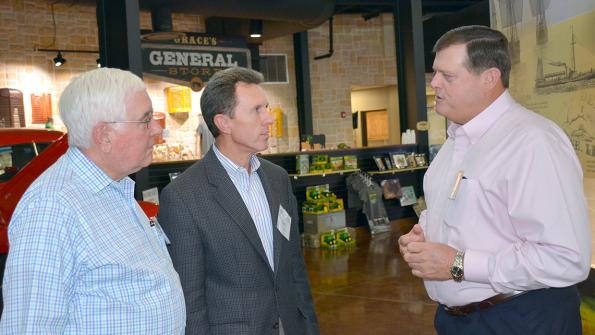
U.S cotton ranks tops in the world for quality. Mills want it to manufacture the yarns and fabrics needed for top-of-the-line textiles. The reputation of U.S. cotton has set such a high mark, industry experts say, that some foreign mills assign fewer inspectors to test it than they do for cotton coming from other countries.
So it’s a surprise — and an inconvenience — when those inspectors find problems, such as contamination, in American cotton.
“The U.S. is still at the bottom of the list of countries exporting contaminated cotton,” says Bill Norman, vice president of technical services for the National Cotton Council, who urged vigilance by producers, ginners, and others who handle U.S. cotton during the recent American Cotton Producers/Cotton Foundation joint meeting at Lubbock, Texas. “We’ve seen a few issues,” he says.
Some 70 percent of the foreign matter found in U.S. cotton is plastic, including shopping bags and other non-agriculture materials, but the most common contaminant is module wrapping, which accounts for two-thirds of the plastic foreign matter.
Delta Farm Press Daily
Stay current on what’s happening in Mid-South agriculture: Subscribe to Delta Farm Press Daily.
“We’re one of the least contaminated cotton exporters in the world,“ Norman says, “so with that reputation it’s a surprise when samplers find contamination. For countries with higher incidences of contamination, mills expect and prepare for it.”
In some situations, mills assign only four workers to test U.S. cotton, while other exporters get as many as eight. Contamination adds to labor requirements and the cost of handling the cotton — inconveniences that could, at some point, affect the premium some mills pay for U.S. cotton.
ZERO TOLERANCE
“We are striving for zero tolerance with contamination,” Norman says. This will include more emphasis on education throughout the industry about how to identify contaminated bales, and even more important, how to eliminate contaminants.
Norman cites 1989 as a benchmark for contamination levels, using an arbitrary figure of 100 for comparison. In the 1990s, that rating “made a significant blip,” he says, when black rubber was showing up in bales. The source was traced to gin doffers, and the council worked with a manufacturer to redesign its system, which got rid of the black rubber.
“We had another blip in the early 2000s, ratcheting up to 140, because of too much moisture,” he says. In 2009, the rating had dropped to 55, but edged up to 70 in 2011, and moved even higher in 2013, to 102, mainly due to black plastic and yellow film.
“In 1989, we were at 100,” says Norman, “and 20 years later we’re at 102 — so we’re no better. We’ve seen some improvements — we no longer have the black rubber — but the mix of contaminants has changed.” Plastics, man-made twine, and grease/oil are all now part of the contaminant list.
PLASTIC AND THREAD
“We’re seeing black plastic and red thread. That thread comes from polypropylene twine used for module tie-downs. It’s cheap. We also see some from baling twine.” Cotton twine is much preferred, he says.
Module wraps are also significant sources of contamination, and round bales may cause problems at the gin if not handled properly.
What’s needed to improve the situation? “The National Cotton Council is taking on this responsibility, and making information more accessible on our website,” Norman says. ‘We’re also meeting with John Deere to discuss how to better manage round bale wraps.”
A possible help, he says, will be to work with John Deere to add advisory messages to round bale harvesters. Other possibilities include adding monitors to harvesting equipment that identifies contaminants in the field. “We’re also working with Cotton Incorporated,” he says.
Part of the solution will be improved handling at the gin. “We will see more round bales coming in to gins, so we need more training about how to properly handle them.”
PREVENTION A PRIORITY
Other speakers addressed the contamination issue. “Preventing contamination is a top priority for the council,” said Shane Stephens, chairman of the organization. “I can’t overstate the importance of this. China, for instance, wants more quality U.S. cotton.”
Bruce Atherley, Cotton Council International executive director, says the U.S. fiber remains No. 1 in world cotton exports and the leader in low contamination. “But this is a big issue — mills are unhappy when they find contaminated cotton, which could cause them to switch to Australian cotton or to offer lower premiums for U.S. cotton.”
Atherley says his job at CCI is to create demand for U.S. cotton. “We want to sell more U.S. cotton at a higher price so farmers can make more money.”
A crucial question, he says, is how to drive U.S. cotton values and maintain the U.S. cotton premium. “We want to make U.S. cotton the preferred fiber. We can’t compete on price, so we must produce a premium product, and preventing contamination is an important part of that.”
About the Author(s)
You May Also Like






